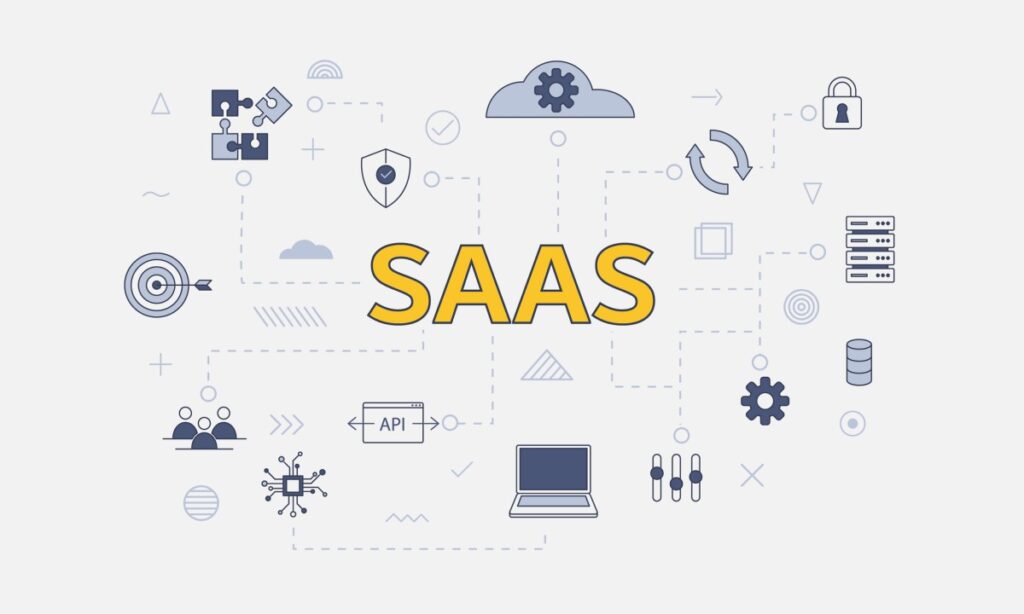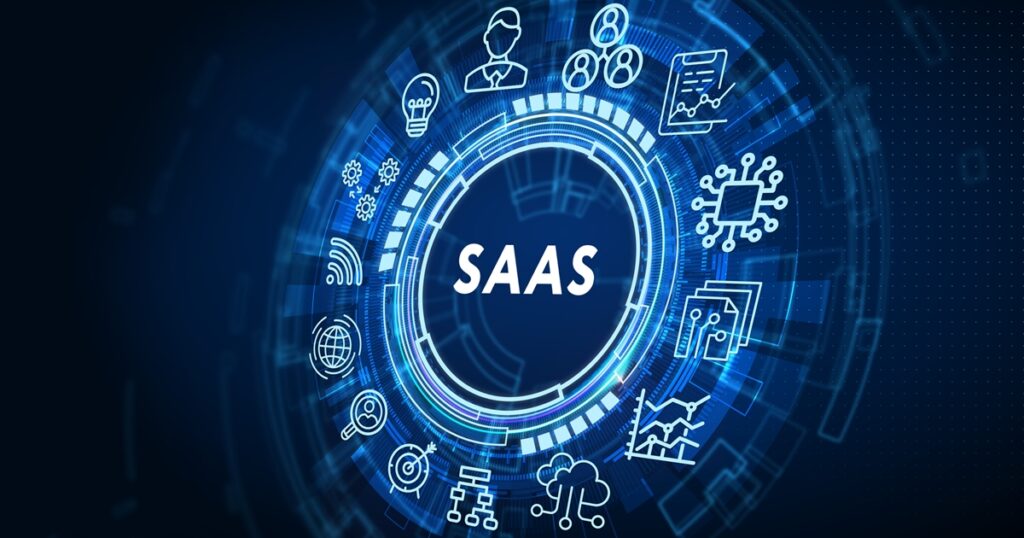The SaaS: Transforming How We Use Software
Software as a Service (SaaS) has changed the way businesses and individuals use and access software. Instead of purchasing and installing software on local machines, users can now access powerful tools through the internet. This shift to SaaS has revolutionized industries by making software more accessible, scalable, and cost-effective. In this blog post, we’ll explore the impact of SaaS, how it works, and its many benefits, all while keeping the content easy to read with simple transitions and shorter sentences.
What is SaaS?
SaaS stands for Software as a Service. It’s a model where software is delivered online, rather than through traditional means like physical installation. Companies host the software on their servers, and users access it via a web browser. This method eliminates the need for users to install, maintain, or update the software on their own.
Instead, service providers handle these tasks remotely. As a result, SaaS has gained immense popularity for businesses and individuals alike.
How SaaS Works
SaaS providers host the applications on the cloud. Users then connect to these applications using the internet. It’s a simple process: sign up, log in, and use the software directly from the browser.
No installation is required, and users can access their data from any device. This flexibility is one of the key reasons why SaaS is growing so fast. The user experience is seamless and consistent, regardless of where or how the software is accessed.
The Rise of SaaS
Over the last two decades, SaaS has rapidly grown in popularity. One reason for this is the global shift towards cloud computing. The flexibility of the cloud enables companies to scale their operations easily. SaaS platforms benefit from the same scalability, as they are built on top of cloud infrastructures.
Moreover, businesses are looking for ways to cut costs and reduce their reliance on internal IT departments. SaaS helps companies achieve this by offering ready-made solutions that don’t require significant setup or maintenance.
Key Features of SaaS
The SaaS offers several features that make it attractive for businesses:
- Accessibility: Since SaaS is hosted online, users can access it from any device with an internet connection. This is ideal for remote teams or businesses with multiple locations.
- Cost Efficiency: SaaS eliminates the need for costly hardware and ongoing maintenance. Users pay a subscription fee, which is often more affordable than buying software licenses.
- Automatic Updates: SaaS providers handle updates and patches, ensuring that users always have access to the latest features and security improvements.
- Scalability: As businesses grow, they can easily scale their SaaS usage without needing to invest in new infrastructure.
- Security: Most SaaS providers invest heavily in security measures, offering robust protection against cyber threats. Data is often backed up and encrypted to ensure safety.
Benefits of SaaS
One of the biggest benefits of SaaS is its accessibility. Whether you’re in the office, at home, or on the go, you can log in to your account and start working. This is particularly useful for businesses with remote teams.
Another major benefit is cost savings. Traditional software often requires a large upfront investment in licenses and hardware. SaaS eliminates these costs. Instead, users pay a monthly or annual subscription, making it more affordable for businesses of all sizes.
In addition to cost savings, SaaS offers scalability. As your business grows, you can easily add new users or features without the need for additional infrastructure. This allows companies to respond quickly to changes in demand without overspending.
SaaS also simplifies maintenance. With traditional software, businesses need to install updates and patches manually. SaaS providers handle these updates automatically, ensuring users always have the latest version. This not only saves time but also ensures better security since updates often include important security patches.
SaaS and Business Efficiency
The SaaS improves business efficiency in several ways. First, it reduces the need for internal IT resources. Since SaaS providers handle maintenance and updates, businesses can focus on their core operations instead of managing software.
Second, SaaS enables faster deployment. Traditional software often requires significant time for installation and configuration. With SaaS, businesses can start using the software as soon as they sign up. This fast deployment means quicker results and less downtime.
Additionally, SaaS platforms often integrate with other software tools, allowing businesses to streamline their operations. For example, many SaaS tools for customer relationship management (CRM) integrate with email marketing platforms or project management tools, enabling teams to work more efficiently.

SaaS in Different Industries
SaaS has made its way into nearly every industry. Let’s explore a few examples of how different sectors are utilizing SaaS.
SaaS in Finance
In the finance industry, SaaS is used for accounting, billing, and financial reporting. Cloud-based tools enable businesses to manage their finances from any location. Additionally, financial SaaS platforms can integrate with other tools, such as payroll systems, to provide comprehensive financial management.
SaaS in Healthcare
Healthcare providers use SaaS to manage patient data, schedule appointments, and handle billing. These platforms offer secure storage of sensitive health data, complying with strict privacy regulations. Moreover, SaaS solutions enable telehealth services, making healthcare more accessible.
SaaS in Education
The education sector has embraced SaaS for online learning. Schools and universities use cloud-based platforms to offer virtual classes, manage student records, and communicate with parents. SaaS tools also facilitate remote learning, making education accessible to students worldwide.
SaaS in Marketing
So the SaaS platforms have become a go-to for marketing professionals. Tools for email marketing, social media management, and SEO optimization are all available through SaaS providers. Marketers can automate campaigns, track results, and optimize their strategies using data-driven insights.

SaaS and the Future of Software
SaaS is set to dominate the future of software. With its flexible and scalable model, it offers endless possibilities for businesses to grow and adapt. As cloud technology continues to evolve, SaaS platforms will become even more powerful and integrated into our daily workflows.
Additionally, SaaS will continue to drive innovation. Many SaaS providers are already incorporating artificial intelligence (AI) and machine learning into their platforms. These features allow for advanced analytics, predictive maintenance, and enhanced automation.
As businesses continue to adopt SaaS, we can expect further innovations in areas like security, data management, and customization.
Common SaaS Challenges
While SaaS offers many benefits, it also presents some challenges. One of the main concerns is data security. Since SaaS platforms are cloud-based, they are vulnerable to cyber-attacks. However, most SaaS providers invest heavily in security measures to mitigate this risk.
Another challenge is internet dependence. SaaS requires a reliable internet connection. For businesses in areas with poor connectivity, this can pose a problem. However, with the global expansion of high-speed internet, this issue is becoming less significant.
Lastly, customization can be a limitation for some businesses. While many SaaS platforms offer customization options, they may not be as flexible as traditional software. However, providers are continually improving their platforms to meet the diverse needs of users.
The Impact of SaaS on IT Departments
SaaS has significantly reduced the burden on IT departments. In the past, IT teams had to manage installations, updates, and troubleshooting. With SaaS, these tasks are handled by the service provider. This allows IT departments to focus on more strategic initiatives, such as innovation and digital transformation.
However, this shift has also changed the role of IT teams. Instead of managing software, IT professionals now focus more on vendor management and security. As SaaS platforms become more prevalent, IT departments must adapt to these changes.

Conclusion
SaaS is transforming how businesses and individuals use software. By providing affordable, scalable, and accessible solutions, SaaS has become a key driver of digital transformation. Its benefits, such as cost savings, flexibility, and automatic updates, make it an attractive option for businesses of all sizes.
As SaaS continues to evolve, we can expect even more innovative features that will further improve business efficiency and productivity. From finance to healthcare, SaaS is revolutionizing industries, helping companies adapt to the digital age.
By understanding the power of SaaS, businesses can leverage its benefits to stay ahead of the competition and embrace the future of software.


Pingback: Cloud Computing : Big Revolution in the Business Operations